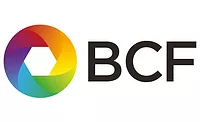RPM Results Reflect Pressure of Raw Material Costs
MEDINA, OH - RPM International Inc. reported sharply improved net sales for its fiscal 2012 second quarter ended November 30, 2011. Net income increased slightly, and earnings per diluted share were flat, due to higher raw material and acquisition-related expenses.
Net sales grew 10.9 percent to $916.1 million from $826.3 million a year ago. Consolidated EBIT increased 4 percent, to $93.0 million from $89.4 million in the year-ago second quarter. Net income attributable to RPM stockholders was up 2.3 percent, to $49.9 million from $48.8 million in the fiscal 2011 second quarter. Earnings per diluted share for the second quarter were $0.38 in both years.
"Investments in future growth, including much higher acquisition expenses associated with the roughly $165 million in annualized sales from businesses acquired so far this fiscal year, and higher raw material costs were the primary factors behind our net income lagging sales growth," said Frank C. Sullivan, Chairman and Chief Executive Officer. "Raw material costs continued to be a challenge during our second quarter and typically have a more significant impact on our consumer segment, which faces longer lead times in adjusting prices than our industrial segment," he stated.
Earnings for the second quarter of fiscal 2011 and 2012 were both impacted by "one-time" items. As previously reported, last year's second quarter contained approximately $7.5 million in non-recurring items, representing an after-tax benefit of approximately $0.04 per share.
This year's second quarter results of $0.38 per share include the benefit of the company's equity ownership in Kemrock Industries and Exports Ltd. of $0.04 per share, partially offset by $0.03 per share from the impact of higher acquisition-related expenses.
Excluding "one-time" items from both years, diluted earnings per share for the fiscal 2012 second quarter of $0.37 exceeded diluted earnings per share for the same quarter last year of $0.34, for an increase of 8.8 percent.
During the second quarter, industrial segment sales grew 10.1 percent to $641.5 million from $582.5 million in the fiscal 2011 second quarter. Organic sales improved 5.9 percent, including 0.2 percent in foreign exchange translation losses, while acquisition growth added 4.2 percent. Industrial segment EBIT increased 14.0 percent, to $78.3 million from $68.7 million in the fiscal 2011 second quarter.
In the second quarter, RPM's ownership position in Kemrock, India's leading producer of reinforced polymer composites, exceeded 20 percent for the first time, thereby triggering a reportable equity ownership position in a portion of Kemrock's earnings. As a result, the industrial segment's EBIT included $5.2 million in equity in earnings of Kemrock, of which $4.6 million related to a one-time cumulative catch-up benefit. Industrial EBIT also included higher acquisition-related expenses of $1.8 million, partially offsetting the Kemrock benefit.
RPM's consumer segment sales increased 12.6 percent to $274.6 million from $243.8 million in the fiscal 2011 second quarter. Organic sales improved 12.5 percent, with no foreign exchange impact, while acquisition growth added 0.1 percent. Consumer segment EBIT fell 2.0 percent, to $26.8 million from $27.3 million a year ago.
"Our consumer product lines enjoyed solid organic sales volume growth due to strong market acceptance of higher end new products and increased market share, but their difficulty in quickly passing along higher raw material costs kept this sales increase from immediately carrying to the bottom line," stated Sullivan.
Looking forward, Sullivan stated, "We reiterate our full-year guidance announced on July 25, 2011, which anticipated sales growth of 8 percent to 10 percent and growth in diluted earnings per share of 10 percent to 15 percent. As usual, we expect weaker results for the seasonally difficult fiscal third quarter ending February 29, 2012, but anticipate a strong fiscal fourth quarter, with continued strength in top-line sales from both our industrial and consumer segments, combined with a moderating of raw material costs and improved gross margin contribution."
Looking for a reprint of this article?
From high-res PDFs to custom plaques, order your copy today!





